Created with beta software, there may be some bugs
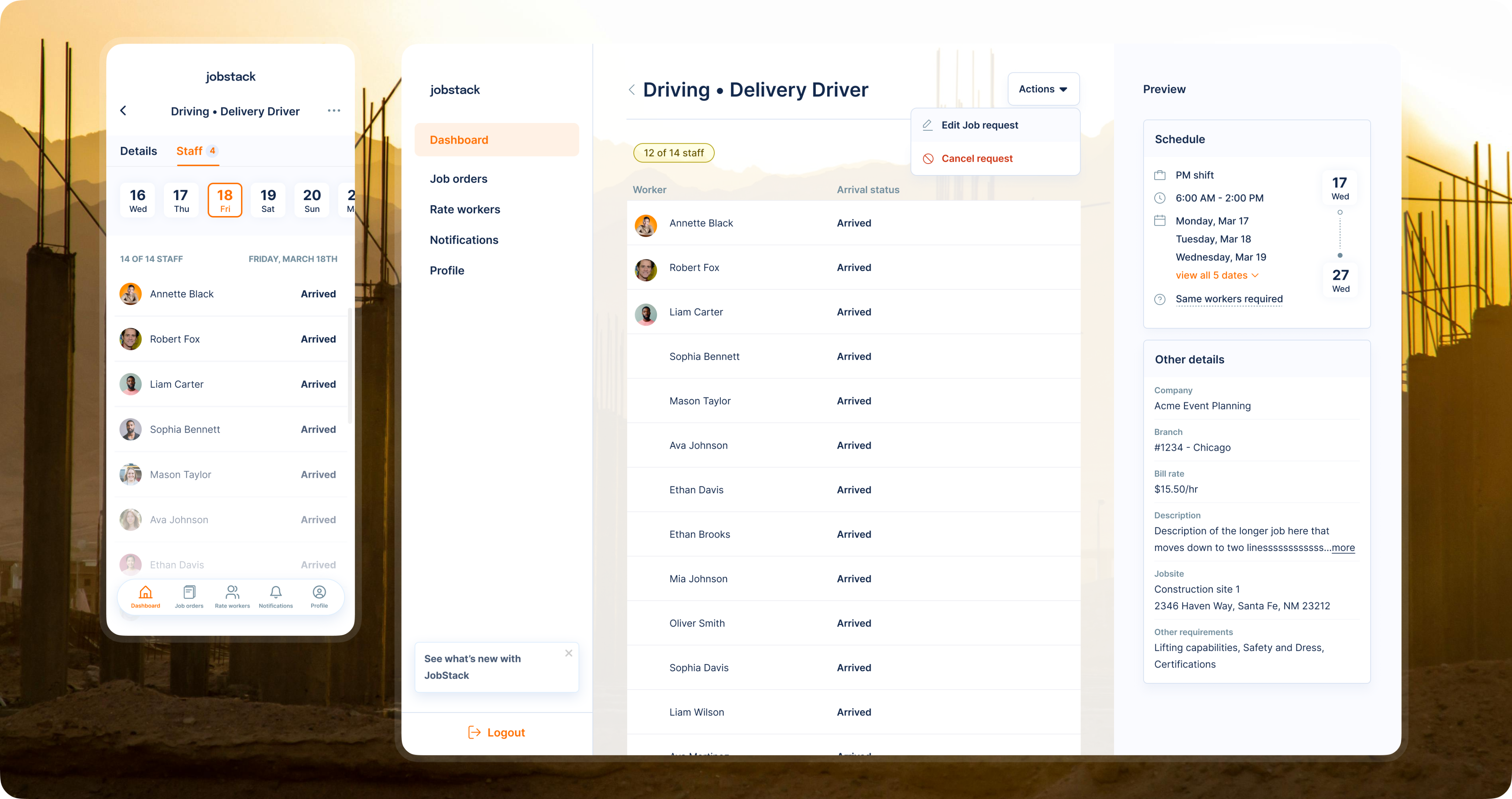
Connecting people with work, faster
JobStack is PeopleReady’s flagship digital staffing platform that connects job seekers with short-term and on-demand work opportunities for workers looking for flexible jobs and employers who need help fast.
I led product design for both the mobile and desktop apps, shaping experiences for two distinct audiences: people looking for work and businesses trying to fill shifts quickly and reliably.
Role: Product design lead
Problems
Despite strong demand for on-demand labor, the early experience was:
- Fragmented across internal software, with inconsistent UX between mobile and desktop.
- Designed more around staffing processes than real-world user goals and behaviors.
- Frustrating for users who needed to take quick action—finding or filling a job fast.
For workers:
- Hard to find and claim jobs in real time.
- Limited visibility into job details, expectations, and payment.
For employers:
- High friction to post jobs, review candidates, and manage repeat workers.
- Poor visibility into real-time staffing status.
Research
I spent a day at a physical PeopleReady branch to hear directly from branch workers what they were dealing with and how they were managing incoming calls from employers complaining about their workers.
“...[they] spend a ton of man hours finding workers that are reliable.”
Approach
Using that day’s worth of notes and anecdotal evidence from longtime workers at the company, I worked across product, engineering, and operations to start designing an experience that made getting or filling a job feel as fast and seamless as ordering food.
For Job Seekers:
- Designed a mobile-first experience optimized for repeat use: simplified job cards, swipe-to-claim, real-time updates, and onboarding flows tailored to new users.
- Surfaced the most relevant, nearby jobs first—based on location, role history, and eligibility.
For Employers:
- Built a desktop and mobile-responsive platform to post, manage, and fill shifts with just a few clicks.
- Introduced workflows for reordering past workers, approving timesheets, and handling last-minute changes.
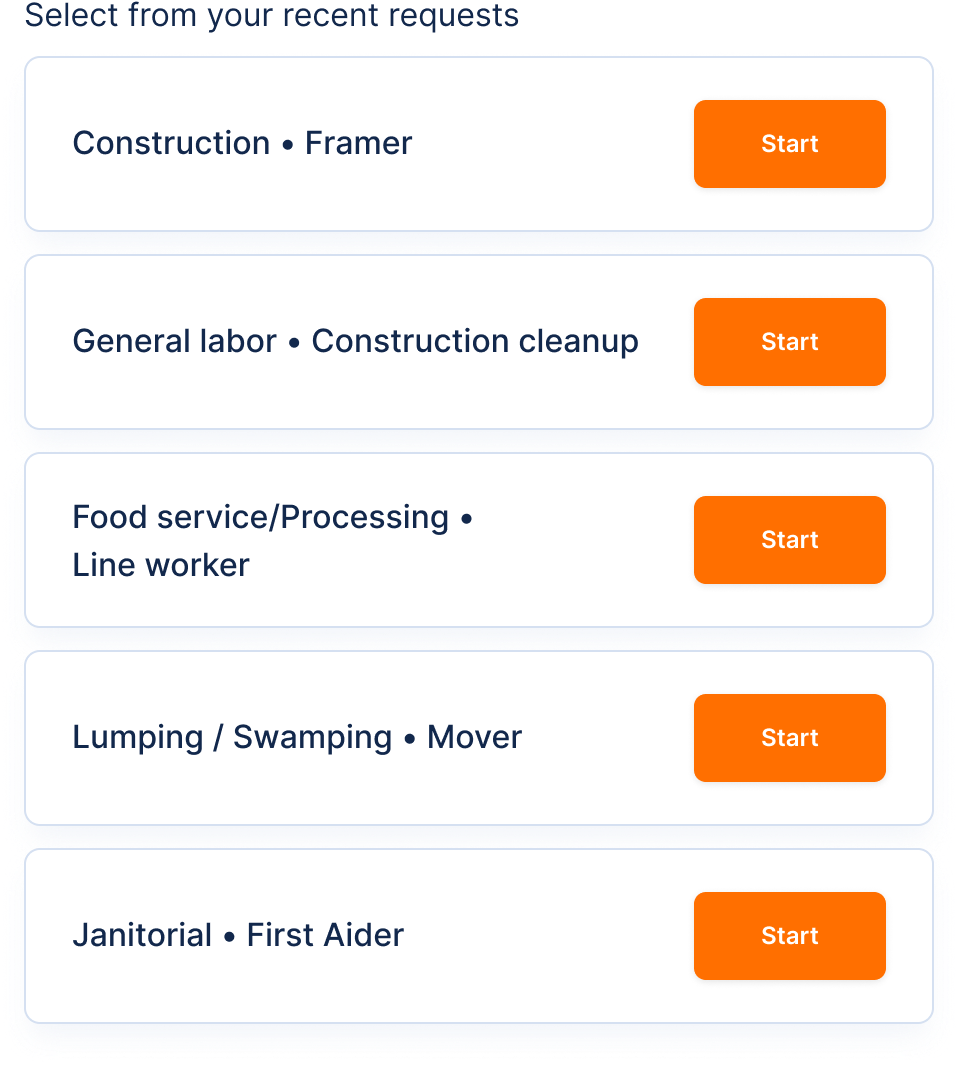
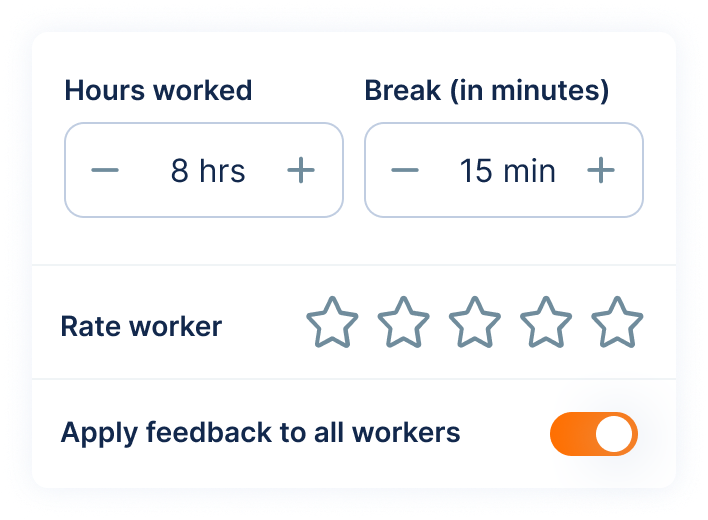
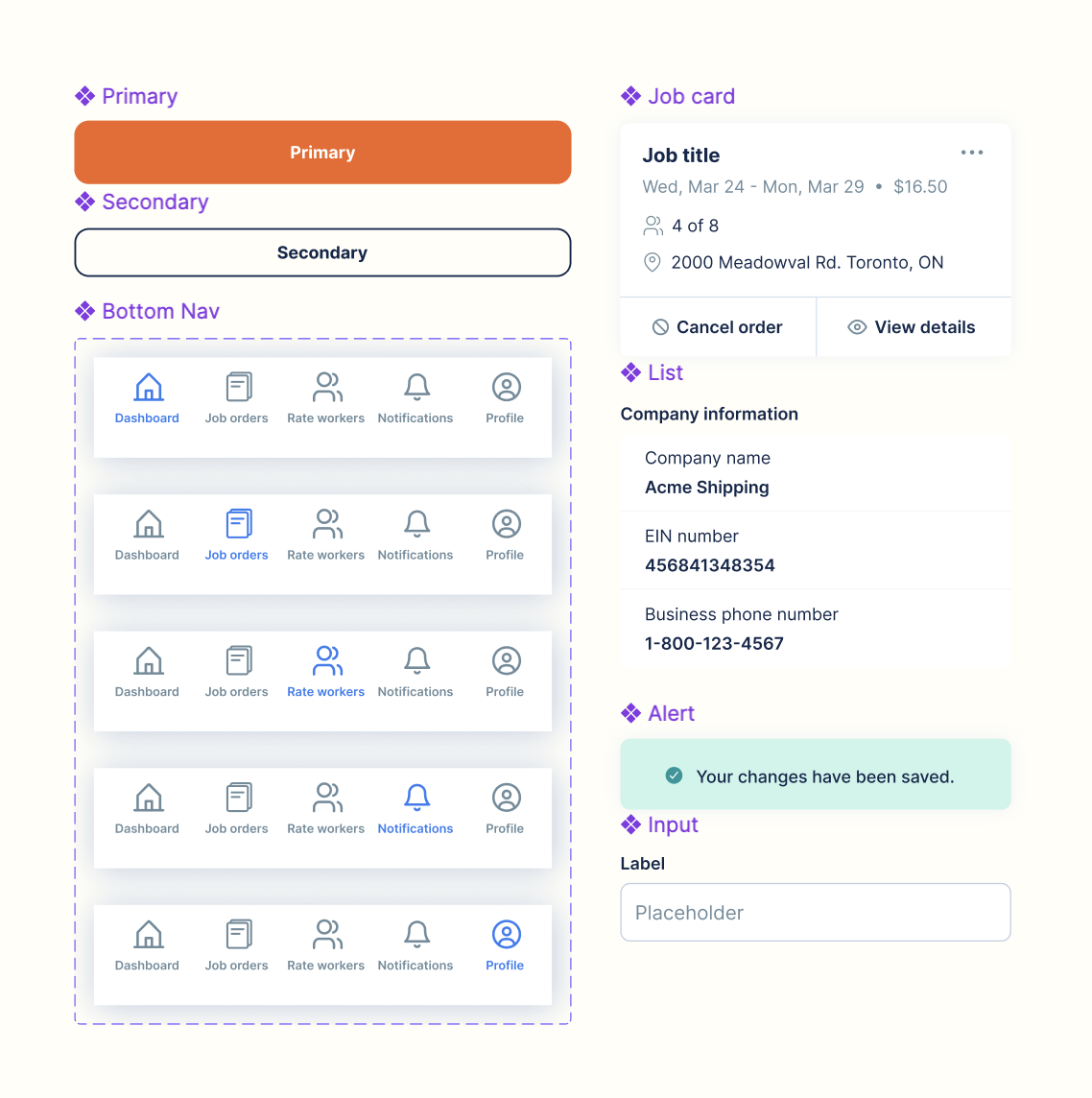
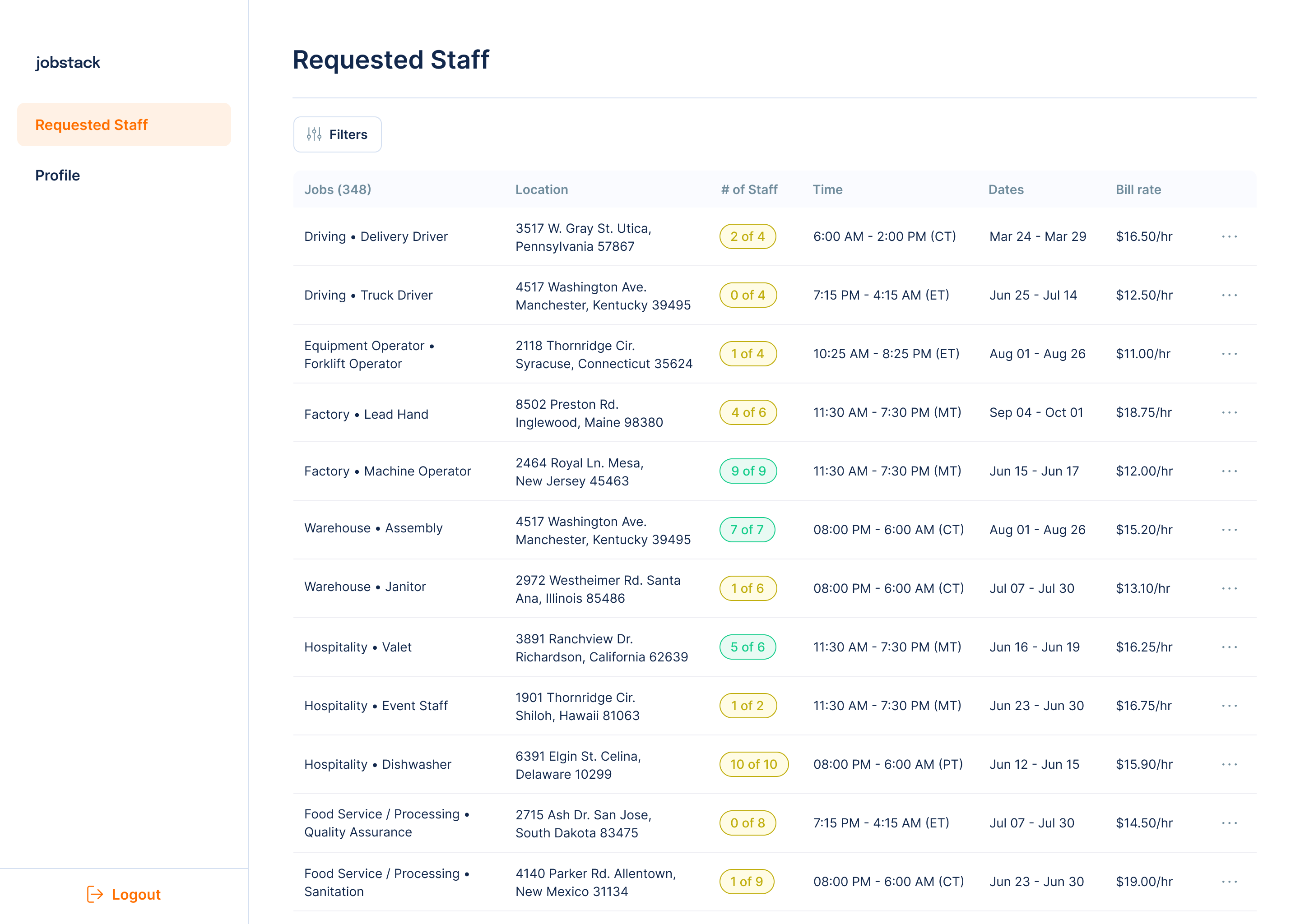
Outcome
Time-to-hire
~15%
Support volume
~35%
Retention
~50%
The quantity and quality of employees improved dramatically, since employers were able to easily select their favorite workers.
- Helped scale JobStack to millions of worker-employer connections across the U.S.
- Significantly improved time-to-hire and time-to-work metrics.
- Reduced support volume by making key actions intuitive and fast.
- Played a central role in digitizing one of the largest staffing operations in the U.S., bringing clarity and modern design to a traditionally analog process.
Created with beta software, there may be some bugs

Connecting people with work, faster
JobStack is PeopleReady’s flagship digital staffing platform that connects job seekers with short-term and on-demand work opportunities for workers looking for flexible jobs and employers who need help fast.
I led product design for both the mobile and desktop apps, shaping experiences for two distinct audiences: people looking for work and businesses trying to fill shifts quickly and reliably.
Role: Product design lead
Problems
Despite strong demand for on-demand labor, the early experience was:
- Fragmented across internal software, with inconsistent UX between mobile and desktop.
- Designed more around staffing processes than real-world user goals and behaviors.
- Frustrating for users who needed to take quick action—finding or filling a job fast.
For workers:
- Hard to find and claim jobs in real time.
- Limited visibility into job details, expectations, and payment.
For employers:
- High friction to post jobs, review candidates, and manage repeat workers.
- Poor visibility into real-time staffing status.
Research
I spent a day at a physical PeopleReady branch to hear directly from branch workers what they were dealing with and how they were managing incoming calls from employers complaining about their workers.
“...[they] spend a ton of man hours finding workers that are reliable.”
Approach
Using that day’s worth of notes and anecdotal evidence from longtime workers at the company, I worked across product, engineering, and operations to start designing an experience that made getting or filling a job feel as fast and seamless as ordering food.
For Job Seekers:
- Designed a mobile-first experience optimized for repeat use: simplified job cards, swipe-to-claim, real-time updates, and onboarding flows tailored to new users.
- Surfaced the most relevant, nearby jobs first—based on location, role history, and eligibility.
For Employers:
- Built a desktop and mobile-responsive platform to post, manage, and fill shifts with just a few clicks.
- Introduced workflows for reordering past workers, approving timesheets, and handling last-minute changes.




Outcome
Time-to-hire
~15%
Support volume
~35%
Retention
~50%
The quantity and quality of employees improved dramatically, since employers were able to easily select their favorite workers.
- Helped scale JobStack to millions of worker-employer connections across the U.S.
- Significantly improved time-to-hire and time-to-work metrics.
- Reduced support volume by making key actions intuitive and fast.
- Played a central role in digitizing one of the largest staffing operations in the U.S., bringing clarity and modern design to a traditionally analog process.